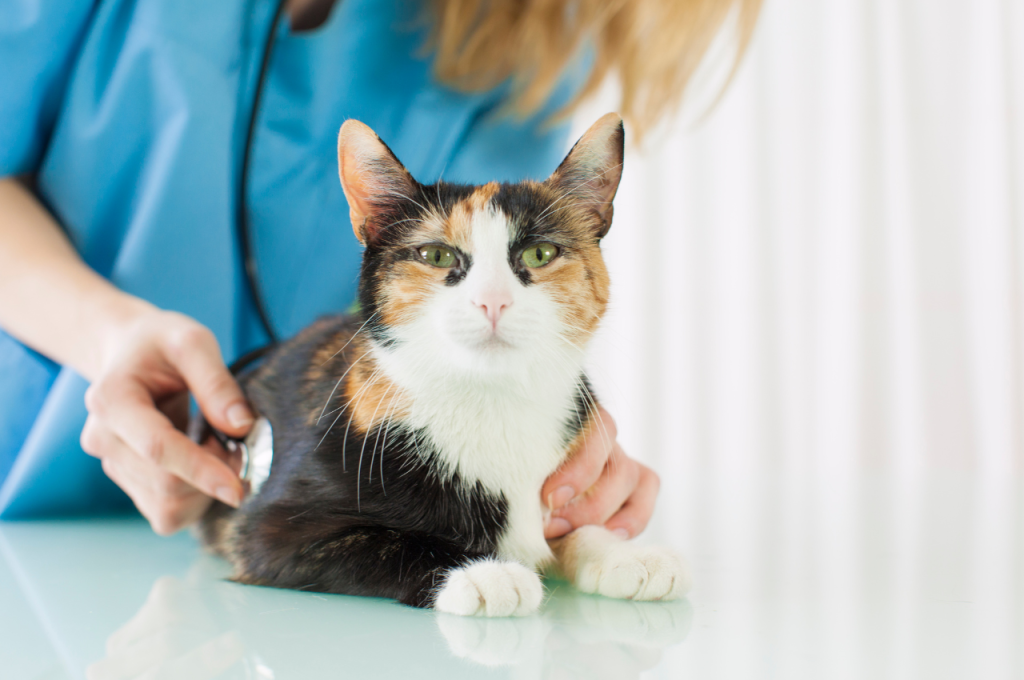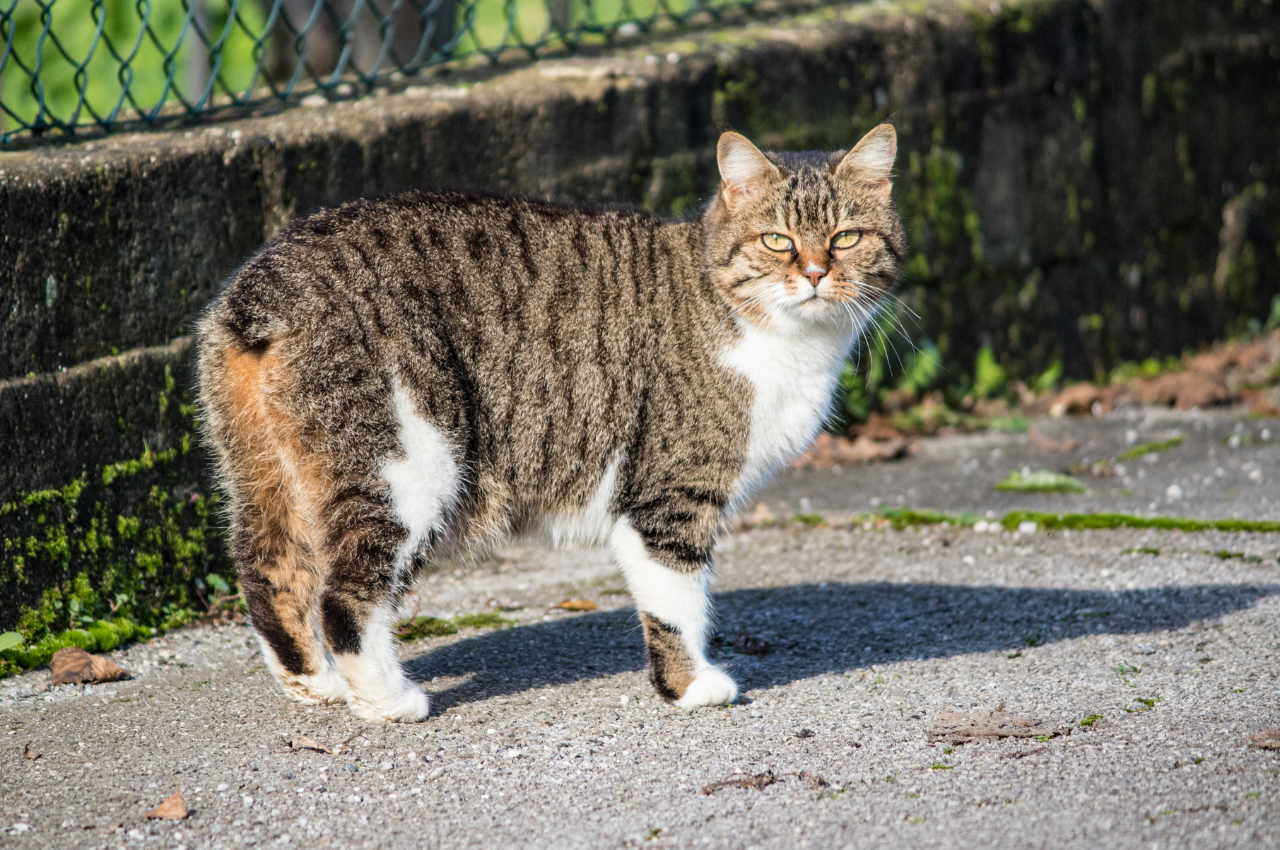Cats without tails may experience balance and mobility issues due to the missing tail. These cats may also have difficulty communicating through tail movements.
Cats use their tails for various purposes, including balance, communication, and expression. When a cat is born without a tail or has a shortened tail, it can lead to health problems and challenges in their daily lives. In addition to the physical aspect, cats without tails may also face social and emotional difficulties due to their unique appearance.
Understanding the specific needs and potential health issues of tailless cats is essential for their overall well-being and quality of life. By providing appropriate care and attention, cat owners can ensure that their tailless feline companions lead happy and healthy lives.
The Unique World Of Tailless Cats
Breeds And Their History
Several cat breeds are known for their distinctive lack of tails, including the Manx, the Japanese Bobtail, and the American Bobtail. Each of these breeds has a unique history and origin story.

Genetics Behind Taillessness
The genetic mutation responsible for taillessness in cats is known as the Manx gene. This mutation can lead to various health issues and is essential to understand for breeders and owners of tailless cats.
Physical Characteristics And Behavior
When it comes to cats without tails, understanding their physical characteristics and behavior is essential for their well-being. These unique felines have distinct traits that set them apart from their tailed counterparts, impacting both their appearance and behavior.
Physical Appearance
Cats without tails, also known as Manx cats, possess a distinctive appearance due to their genetic mutation. This breed typically has a rounded, compact body, with a solid bone structure and a unique gait. The absence of a tail contributes to their distinct silhouette, giving them a charming and distinctive look. Their hind legs are often longer than those of cats with tails, which adds to their unique appearance.
Behavioral Traits
Beyond their physical characteristics, cats without tails also exhibit unique behavioral traits. These felines are known for their playful and active nature. They are often described as sociable and friendly, forming strong bonds with their human companions. Due to their playful disposition, they require ample mental and physical stimulation to thrive.
Common Health Issues In Tailless Cats
Tailless cats, also known as Manx cats, are prone to certain health issues. These include spinal problems, urinary tract issues, and digestive disorders. It is important to monitor their health closely and seek veterinary care if needed.
Cats without tails, also known as tailless cats or bobtail cats, are a unique breed that have captivated cat lovers around the world. While their lack of a tail may give them a distinctive appearance, it can also lead to certain health issues. In this article, we will explore the common health problems that tailless cats may face and how these issues can impact their overall well-being.
Spinal Problems
Tailless cats are more susceptible to spinal problems due to the absence of their tail, which plays a crucial role in maintaining balance and stability. Without a tail to help distribute their weight, tailless cats may experience strain on their spinal column, leading to discomfort and potential mobility issues. This can result in difficulties with jumping, climbing, and even walking.
Balance And Mobility Issues
The absence of a tail can significantly impact a cat’s balance and mobility. Cats use their tails as a counterbalance, enabling them to make precise movements and maintain stability. Without this natural aid, tailless cats may struggle with coordination, leading to balance issues and an increased risk of falls or accidents. Their reduced mobility can also affect their ability to engage in physical activities, impacting their overall fitness and quality of life.
The Manx Syndrome Explained
Cats without tails, such as the Manx breed, are known for their unique appearance and charming personalities. However, they are also prone to a genetic condition known as the Manx syndrome, which can lead to various health problems. Understanding the causes, symptoms, diagnosis, and treatment of this syndrome is crucial for cat owners to ensure the well-being of their feline companions.
Causes And Symptoms
The Manx syndrome is caused by a genetic mutation that affects the development of the tail and spine in Manx cats. Due to the shortened spine, these cats may experience a range of health issues, including urinary and fecal incontinence, as well as spinal deformities. Other symptoms may include difficulty walking, lameness, and in severe cases, paralysis.
Diagnosis And Treatment
Diagnosing the Manx syndrome involves a thorough examination by a veterinarian, including X-rays to assess the spinal condition. Treatment options vary depending on the severity of the symptoms, and may include medication to manage pain and discomfort, as well as physical therapy to improve mobility. In some cases, surgical intervention may be necessary to address spinal deformities and alleviate associated health problems.
Preventive Measures And Care
Cats without tails can face unique health challenges, requiring special attention to ensure their well-being. By implementing preventive measures and providing proper care, you can help your tailless feline companion lead a healthy and happy life.

Regular Veterinary Check-ups
Regular vet visits are crucial for monitoring your tailless cat’s health.
- Schedule annual check-ups for early detection of any health issues.
- Vaccinations should be up-to-date to prevent diseases.
- Dental care is essential to prevent dental problems.
Specialized Care Tips
Tailless cats may require specific care due to their unique anatomy.
- Provide soft bedding to protect their spine.
- Avoid jumping to prevent spinal injuries.
- Groom regularly to prevent matting of fur around the tail area.
Adopting A Tailless Cat
Opting to welcome a tailless cat into your home can bring joy and companionship. However, cats without tails may encounter unique health issues, such as balance and mobility challenges. Regular veterinary check-ups are essential to ensure their well-being.
Cats without tails, also known as Manx cats, are a unique and special breed of feline. While they are known for their adorable nub tails or lack of tail altogether, it’s important to note that they may have some health issues associated with their genetic mutation. However, with proper care and attention, Manx cats can live long and healthy lives. If you’re considering adopting a tailless cat, there are some important considerations to keep in mind.
Considerations Before Adoption
Before bringing a tailless cat into your home, it’s crucial to consider the following:
- Health concerns: As mentioned, Manx cats may have some health issues related to their lack of tail. These can include spinal problems, urinary tract issues, and digestive problems. It’s important to discuss these concerns with a veterinarian before adopting a tailless cat.
- Special needs: Due to their genetic mutation, Manx cats may require special care or accommodations. For example, they may need help with grooming or require a litter box with lower sides to make it easier for them to climb in and out.
- Personality: Like any other cat, tailless cats have their own unique personalities and temperaments. It’s important to spend time with a potential adoptee to ensure that their personality is a good fit for your household.
Where To Adopt
If you’ve decided that a tailless cat is right for you, there are several places where you can adopt one:
| Option | Description |
| Shelters and rescues | Check with your local animal shelters and rescues to see if they have any tailless cats available for adoption. These organizations often have a variety of cats in need of loving homes. |
| Breeders | If you’re looking for a specific breed of tailless cat, you may want to consider contacting a reputable breeder. Be sure to do your research and choose a breeder who prioritizes the health and well-being of their cats. |
| Online classifieds | While it’s possible to find tailless cats for sale on online classifieds sites, it’s important to be cautious. Always meet the seller in person and ask for documentation of the cat’s health and history. |
In conclusion, adopting a tailless cat can be a wonderful and rewarding experience. By considering the unique needs of these felines and choosing a reputable adoption source, you can provide a loving home for a cat in need.
Success Stories: Thriving Tailless Cats
Tailless cats, though unique and charming, can be prone to certain health issues due to their genetic mutation. These cats may experience spinal problems and incontinence, but with proper care and attention, they can live happy, fulfilling lives. Regular veterinary check-ups and a supportive home environment are crucial for their well-being.

Owner Testimonials
These tailless felines have proven to be resilient despite their unique condition.
Famous Tailless Cats
- Manx and American Bobtail are famous tailless cat breeds.
- Bob the Manx cat became an internet sensation for his playful antics.
- Stubbs, the Mayor of Talkeetna, was a beloved tailless cat in Alaska.
Owner Testimonials
- Owners of tailless cats often praise their playfulness and affection.
- Tailless cats are known for their adaptability and loving nature.
- Rescued tailless cats have found forever homes and bring joy to their owners.
Conclusion
Cats without tails may suffer from a range of health problems that can impact their quality of life. These issues include balance and mobility problems, incontinence, and spinal cord damage. As responsible pet owners, it’s important to understand the potential risks associated with tailless cats and take steps to minimize their impact. By providing a safe and supportive environment, tailless cats can lead happy and healthy lives.
